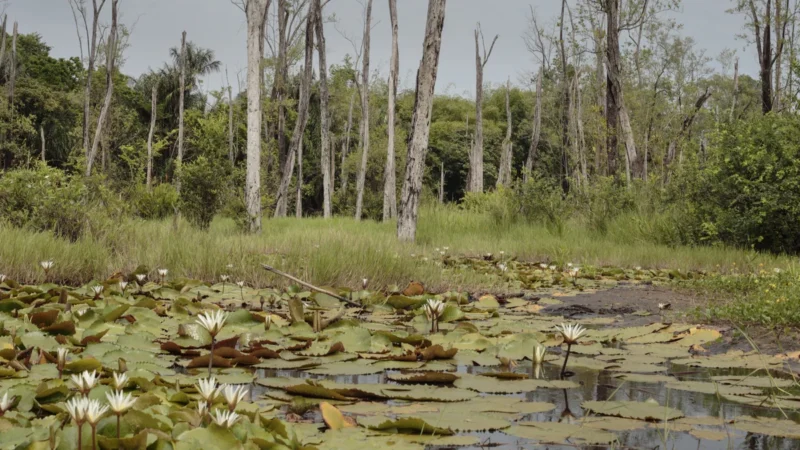Climate Change Impacts: From Rising Temperatures to Natural Disasters

Climate change, driven primarily by human activities such as the burning of fossil fuels and deforestation, has emerged as one of the most pressing challenges of our time. Its far-reaching impacts extend beyond mere environmental concerns, affecting ecosystems, economies, and human societies worldwide. This article delves into the intricate relationship between climate change and its diverse impacts, ranging from escalating temperatures to the heightened occurrence of natural disasters.
1.Rising Temperatures
The Earth’s average temperature is rising at an unprecedented rate due to the accumulation of greenhouse gases in the atmosphere. Carbon dioxide (CO2) and methane (CH4), released from activities like burning fossil fuels and livestock production, trap heat and lead to a phenomenon known as the greenhouse effect. As a result, global temperatures are increasing, triggering a cascade of consequences.
2.Effects on Ecosystems and Biodiversity
The rising temperatures disrupt ecosystems and habitats across the planet. Many species, especially those adapted to specific climate conditions, face challenges in adapting to rapid changes. Coral reefs, for instance, suffer from coral bleaching events caused by elevated sea surface temperatures. This results in reduced biodiversity and threatens the livelihoods of millions who rely on these ecosystems for food and tourism.
3.Melting Ice and Rising Sea Levels
One of the most visible impacts of climate change is the accelerated melting of glaciers and polar ice caps. As these ice masses retreat, they contribute to rising sea levels. Coastal communities are particularly vulnerable to inundation, increased flooding, and coastal erosion. Low-lying regions and island nations are at high risk of displacement and loss of land.
4.Intensification of Extreme Weather Events
The warming climate fuels the intensification of extreme weather events. Hurricanes and typhoons become more potent due to warmer ocean waters, resulting in stronger winds and heavier rainfall. Additionally, droughts and heatwaves become more frequent and severe, causing water scarcity, agricultural losses, and health-related issues.
5.Increased Frequency of Natural Disasters
The relationship between climate change and natural disasters is intricate. While not all disasters are directly caused by climate change, its influence can exacerbate their impacts. For instance, warmer temperatures can lead to more intense wildfires, and rising sea levels can worsen the effects of storm surges during hurricanes. Mitigation efforts, such as better disaster preparedness and resilient infrastructure, become crucial in minimizing the damage caused by these events.
we can conclude this, The impacts of climate change are no longer a distant concern—they are already reshaping our world. From altering ecosystems to magnifying the intensity of natural disasters, the consequences of rising temperatures are far-reaching and require immediate attention. Governments, industries, and individuals must collaborate to reduce greenhouse gas emissions, transition to renewable energy sources, and implement adaptive measures to mitigate the impacts of climate change. By taking decisive action, we can hope to safeguard the planet for current and future generations.
FAQs
1. What is causing the rise in global temperatures?
The primary cause of rising global temperatures is the excessive release of greenhouse gases, such as carbon dioxide and methane, into the atmosphere. These gases trap heat, leading to the greenhouse effect and a warming planet.
2. How does climate change affect wildlife and ecosystems?
Climate change disrupts ecosystems and threatens wildlife by altering habitats and migration patterns. Many species struggle to adapt to changing conditions, leading to shifts in biodiversity and potential extinctions.
3. What’s the connection between climate change and extreme weather events?
Climate change intensifies extreme weather events like hurricanes, droughts, and heatwaves. Warmer temperatures can lead to more powerful storms and prolonged periods of extreme weather, causing widespread impacts on communities and infrastructure.
4. How does melting ice contribute to rising sea levels?
Melting glaciers and polar ice caps add water to the oceans, causing sea levels to rise. As these ice masses shrink due to higher temperatures, they release stored freshwater, contributing to coastal flooding and erosion.
5. Can we prevent the impacts of climate change?
While some impacts are already underway, we can still take action to mitigate their severity. By reducing greenhouse gas emissions, transitioning to renewable energy sources, and implementing sustainable practices, we can slow down the rate of change and limit future impacts.


